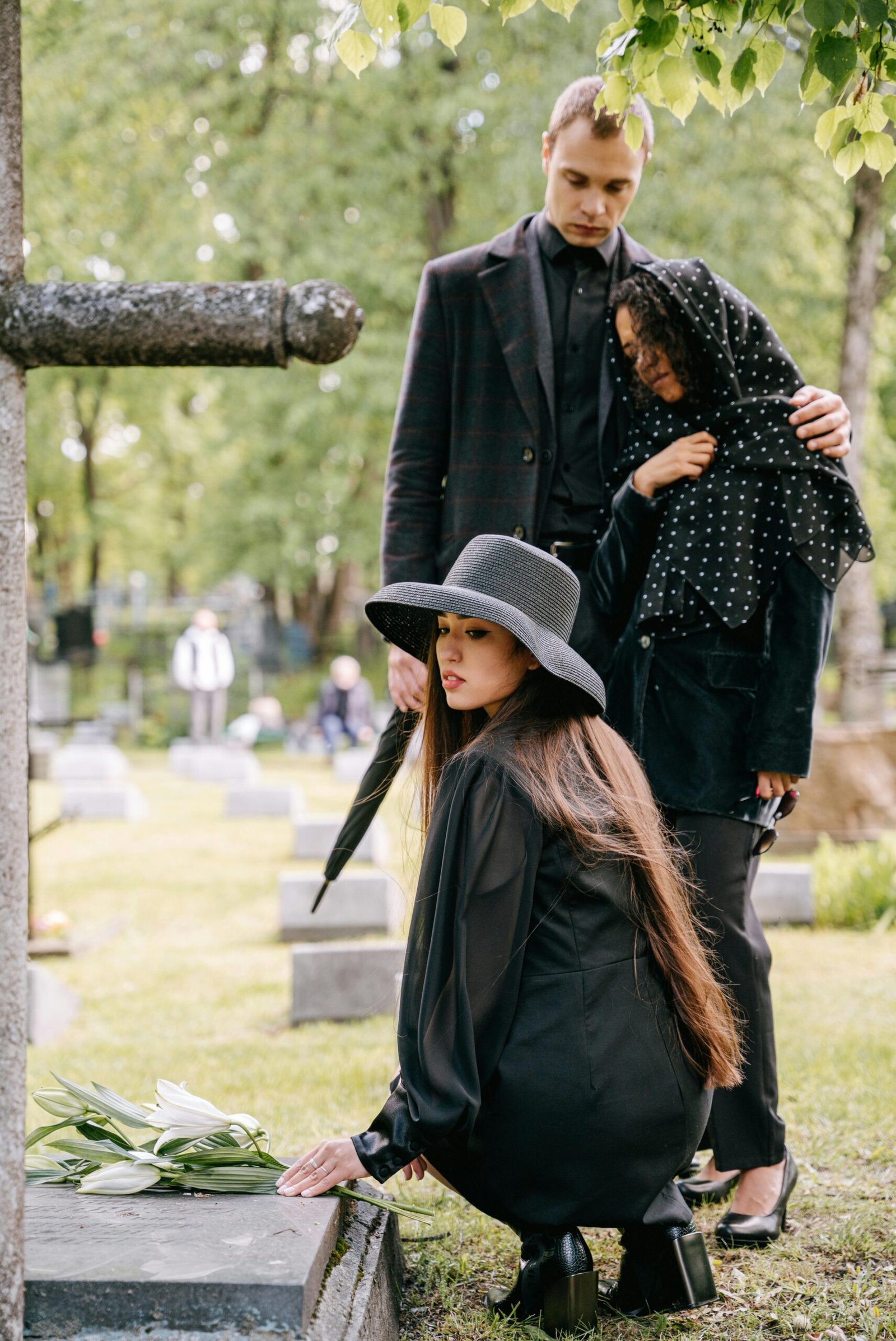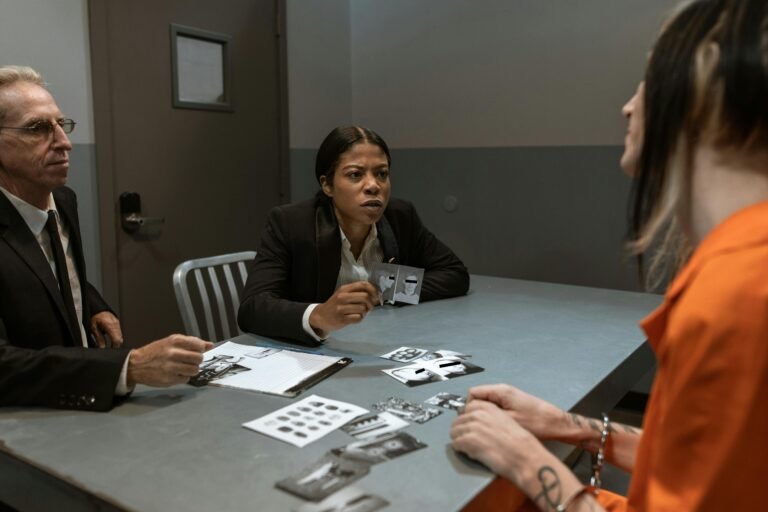Emotional Story: 3 Brothers Drown at Devall Cemetery, Baton Rouge
Introduction
Nestled in the heart of Louisiana’s capital, Devall Cemetery stands as a silent witness to Baton Rouge’s rich history. This historic burial ground isn’t just a final resting place for the departed; it’s a treasure trove of local lore, tragic tales, and enduring family legacies. Among the many stories etched into its weathered tombstones, one stands out—the heartbreaking account of three brothers who met their untimely end in the nearby Amite River. Let’s dive into the depths of this historical landmark and uncover the layers of history, tragedy, and preservation efforts that make Devall Cemetery a must-visit site for history buffs and curious travelers alike.

Unveiling the Secrets of Devall Cemetery
Devall Cemetery, a cornerstone of Baton Rouge history, has been an integral part of the local landscape since the early 19th century. Originally established as a family burial ground by the prominent Devall family, this rural cemetery gradually evolved into a final resting place for many of Baton Rouge’s early settlers and their descendants.
As you walk through the iron gates of Devall Cemetery, you’re immediately transported to a bygone era. Ancient oak trees, draped in Spanish moss, stand sentinel over rows of weathered tombstones and ornate family plots. Each grave marker tells a story, offering glimpses into the lives of those who shaped Baton Rouge’s past.
But it’s not just the silent stories of the deceased that make Devall Cemetery a captivating historical landmark. The tragic tale of three brothers who drowned in the nearby Amite River has become inextricably linked with the cemetery’s legacy, adding a layer of poignancy to its already rich history.
The Heart-Wrenching Tale: Three Brothers Drowning in the Amite River
On a sweltering summer day in the late 1800s, three young brothers from the Devall family set out for a refreshing swim in the Amite River. Little did they know that this innocent outing would end in tragedy and forever change the fabric of their family and the entire Baton Rouge community.
The exact details of that fateful day have been blurred by time, but local folklore paints a vivid picture of the events. The brothers, aged between 10 and 16, were known for their adventurous spirit and love of the outdoors. They often spent their free time exploring the banks of the Amite River, fishing, and swimming in its cool waters.
On this particular day, however, the river was swollen from recent rains, its currents stronger and more treacherous than usual. As the brothers ventured into the water, they were quickly overwhelmed by the powerful current. Despite their efforts to save one another, all three were swept away, their cries for help lost in the roar of the rushing water.
The news of the tragedy spread quickly through Baton Rouge. The tight-knit community was devastated. Search parties combed the riverbanks for days, hoping against hope to find the boys. When their bodies were finally recovered, the entire town mourned.
The Devall family, overcome with grief, laid their sons to rest in the family cemetery. Their graves, marked by three identical headstones, stand as a somber reminder of that tragic day and the unpredictable power of nature.
Whispers in the Wind: The Haunting of Devall Cemetery
In the years following the tragic drowning, Devall Cemetery took on a new dimension in local folklore. Visitors and locals alike began to report strange occurrences and unexplained phenomena, particularly near the graves of the three brothers.
Some claim to have seen the ghostly figures of three young boys playing near their headstones on moonlit nights. Others report hearing childish laughter echoing through the cemetery, even when no one else is around. These eerie encounters have led many to believe that the spirits of the Devall brothers still linger, unable to leave the place where their short lives are commemorated.
One of the most persistent legends is that of “The Lady in White.” Witnesses describe seeing a woman dressed in 19th-century attire, wandering among the graves with a look of profound sorrow. Many believe this to be the mother of the drowned boys, her spirit forever searching for her lost children.
While skeptics dismiss these stories as mere superstition, they’ve undeniably contributed to Devall Cemetery’s mystique. The cemetery has become a popular spot for paranormal enthusiasts and ghost hunters, all eager to experience a brush with the supernatural.
Here are some of the most commonly reported paranormal activities at Devall Cemetery:
- Unexplained cold spots, even on the hottest Louisiana days
- Strange mists or orbs appearing in photographs
- The sound of splashing water, reminiscent of children playing in a river
- Ghostly apparitions dressed in 19th-century clothing
- Feelings of being watched or followed while walking through the cemetery
Whether you believe in ghosts or not, these stories add an extra layer of intrigue to Devall Cemetery, making it a fascinating destination for those interested in both history and the paranormal.
Preserving History: Efforts to Restore and Maintain Devall Cemetery
As with many historical sites, time and neglect have taken their toll on Devall Cemetery. However, in recent years, there’s been a growing movement to preserve this important piece of Baton Rouge’s heritage.
The Devall Cemetery Preservation Society, a non-profit organization formed by descendants of the Devall family and concerned local citizens, has been at the forefront of these efforts. Their mission is to restore and maintain the cemetery, ensuring that this historical landmark and its stories are preserved for future generations.
Some of the key initiatives undertaken by the Preservation Society include:
- Regular clean-up days to clear overgrown vegetation and debris
- Restoration of damaged headstones and monuments
- Documentation of grave sites and creation of a comprehensive database
- Installation of informational plaques to educate visitors about the cemetery’s history
- Fundraising efforts to support ongoing maintenance and restoration work
These preservation efforts face numerous challenges. Funding is often limited, and the delicate nature of many of the older monuments requires specialized restoration techniques. Additionally, the cemetery’s location in a flood-prone area means that extra measures are needed to protect it from water damage.
Despite these obstacles, the community’s commitment to preserving Devall Cemetery remains strong. Local schools have even gotten involved, with history classes conducting research projects on the cemetery and its inhabitants, helping to keep the stories of Baton Rouge’s past alive.
Beyond the Graves: Stories and Legends of Devall Cemetery
While the tragic tale of the three drowned brothers is perhaps the most well-known story associated with Devall Cemetery, it’s far from the only one. The cemetery is a veritable tapestry of tales, each grave marker holding its own unique narrative.
One of the most intriguing legends is that of the “Midnight Picnicker.” According to local lore, on certain nights, visitors have reported seeing a solitary figure seated on a blanket among the graves, enjoying a picnic by lantern light. Some speculate this could be the ghost of a grieving widow, unable to let go of the tradition of decorating and picnicking at loved ones’ graves – a common practice in the 19th century.
Another fascinating story revolves around the “Whistling Tombstone.” This particular grave marker is said to emit a faint whistling sound on windy days. Some attribute this to clever design by the deceased, a local musician who wanted his love of music to continue even after death. Others view it as a more supernatural occurrence.
These stories, whether based in fact or fiction, have become an integral part of Baton Rouge’s folklore. They serve not only to entertain but also to keep the memory of the cemetery’s inhabitants alive, ensuring that their stories continue to be told long after their passing.
Ripples Through Time: The Tragedy’s Impact on Baton Rouge
The drowning of the three Devall brothers had a profound and lasting impact on the Baton Rouge community. In the immediate aftermath of the tragedy, there was a heightened awareness of water safety. Local schools began incorporating water safety lessons into their curricula, and parents became more vigilant about supervising their children near bodies of water.
The incident also led to changes in how the community interacted with the Amite River. Warning signs were erected along dangerous stretches of the river, and local authorities increased patrols during peak swimming seasons.
On a broader scale, the tragedy served as a catalyst for community bonding. In times of grief, the people of Baton Rouge came together, supporting the Devall family and each other. This sense of unity in the face of tragedy has become a hallmark of the Baton Rouge community, persisting to this day.
Today, the impact of the Devall brothers’ tragedy can still be felt. An annual memorial service is held at Devall Cemetery on the anniversary of the drowning, bringing together descendants of the Devall family and community members to pay tribute to the brothers and reflect on the fragility of life.
Honoring the Past: Paying Tribute at Devall Cemetery
Despite its somber history, or perhaps because of it, Devall Cemetery continues to draw visitors from near and far. For many, a visit to the cemetery is a way to connect with Baton Rouge’s past and pay respects to those who came before.
Genealogists and history enthusiasts frequently visit Devall Cemetery, using the grave markers and historical records to piece together family histories and learn more about Baton Rouge’s early settlers. The cemetery has become an invaluable resource for those researching their Louisiana family heritage.
Photography enthusiasts also find inspiration among the cemetery’s weathered tombstones and ancient oaks. Many capture the haunting beauty of Devall Cemetery, creating visual records that help preserve its memory for future generations.
For locals, Devall Cemetery serves as a tangible link to their community’s history. School groups often visit on field trips, learning about local history, genealogy, and the importance of preserving historical sites.
Conclusion:
Devall Cemetery stands as more than just a burial ground; it’s a living museum of Baton Rouge’s history. From its origins as a family plot to its current status as a historical landmark, the cemetery tells the story of a community’s growth, its triumphs, and its tragedies.
The tragic tale of the three Devall brothers, forever linked with the cemetery, serves as a poignant reminder of life’s fragility and the enduring power of memory. Their story, along with countless others, is woven into the very fabric of Devall Cemetery, creating a rich tapestry of local history and lore.
As preservation efforts continue, Devall Cemetery is poised to remain a vital part of Baton Rouge’s cultural landscape for generations to come. It stands as a testament to the community’s resilience, its respect for the past, and its commitment to preserving the stories that have shaped it.
Whether you’re a history buff, a genealogy enthusiast, or simply someone who appreciates the quiet beauty of historic cemeteries, Devall Cemetery offers a unique and moving experience. It’s a place where the past comes alive, where stories are told through stone and silence, and where the spirit of old Baton Rouge lives on.
So the next time you find yourself in Louisiana’s capital, take a moment to visit Devall Cemetery. Walk among the ancient oaks, read the weathered inscriptions, and listen for the whispers of history. You might just find that in this quiet corner of Baton Rouge, the past is never truly gone – it’s simply waiting to be discovered.
boost your business with the help of guest posting contact now (contact form link)







